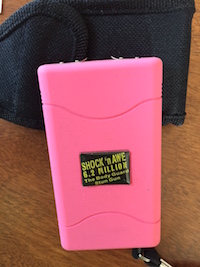Life would sure be a lot easier and safer if we had an accurate profile of a rapist. Unfortunately these criminals come in all shapes, sizes and colors. Let’s look at what makes these men dangerous and how to protect yourself from them.
A rapist usually picks his victim from the opposite sex and same ethnic origin. In fact, more than 90% of all rapes occur in the same race and socio-economic class. But not always. So can we identify a rapist?
Rapists are characterized by a fear of detection and a fear of rejection. Many rapists stalk their victims and will choose a time and place which reduce both the chance of being seen and the number of people who could identify him or come to the assistance of his victim. Besides stalking, a rapist often commits his crime on his turf – his apartment or home, his car or some pre-selected location chosen out of his fear of detection. In fact, more than 50% of acquaintance rapes occur on the man’s turf.
How to avoid being assaulted
The Number One rule: Avoid being isolated. Make sure that others know what you are doing, where you are and when you will return. Use the “buddy system” to escort friends to and from vehicles, buildings and front doors. Park in well lit areas. Try to appear strong, assertive, confident and aware of your surroundings. If you’re going to a large party, go with friends you can trust and agree to “look out” for one another. Remember that alcohol impairs your judgment and can lead you into risky situations you might not get in to if you were sober.
Try to leave with a group rather than alone or with someone you do not know very well. Do not be afraid to intervene. If you see someone in trouble, or anyone, even if it’s a friend, using force or pressuring a woman, get involved or call the police. Trust your instincts and get out of any situation that feels wrong. Don’t assume that someone who has been non-violent in the past will never be violent. Be assertive. If you feel you are being pressured or coerced into sexual activity against your will, do not hesitate to communicate your feelings and get out of the situation. When you say “NO”, say it like you mean it. Back your words with a firm tone of voice and clear body language.
Make your current location YOUR turf.
Call and tell someone where you are and who you’re with. Note the exits. Trust your intuition. If a particular situation makes you feel uncomfortable or unsafe, choose an alternative. Ask or call for help. If you find yourself on his turf and you have been assaulted prepare for legal recourse by planting physical evidence. Leave your fingerprints or strands of hair in an obscure location that will not be easily cleaned (behind the toilet, on a door hinge or light fixture, on a hard to reach portion of a mirror).
Psychology and beating a rapist
Fear of rejection is the second characteristic of a rapist. They are generally unable to take “No” for an answer. So the two real reasons for shouting “NO!” are not to persuade him to listen to you but to call attention to yourself and to provide a legal defense if needed in the future should the attacker claim the act was consensual.
Approximately 50% of women escape attempted sexual assaults if they yell and 85% escape if they vigorously and quickly resist physically. Women who beg and plead are more likely to be raped. Numerous studies have shown that women who respond to the situation quickly and actively resist the attacker are more likely to avoid being raped than those who exhibit either passive behavior (fast talking) or no resistance. So, you may have to fight it out. Remember, you’re going to be hurt anyway. You might as well make him suffer too and get some evidence under your nails, on your body, clothes, etc. But even though you’re scared, try and listen to the little voice in your head. You will have to make split second choices: will I be hurt more if I fight than if I don’t; does he intend to kill me?
Learn to protect yourself.
 Learn the basics of self-defense. Know vulnerable targets of the assailant – eyes, nose, throat, stomach, and kneecaps and other joints – and how to effectively strike them. Learn how to carry items that could potentially be used as weapons (for example, a roll of coins, an umbrella or a cane, pepper or a cigarette lighter, gun (if you’re allowed one where you live), or a pocket taser like mine in the photo). Remember, fighting back because you are in fear of your life is a defense under the law.
Learn the basics of self-defense. Know vulnerable targets of the assailant – eyes, nose, throat, stomach, and kneecaps and other joints – and how to effectively strike them. Learn how to carry items that could potentially be used as weapons (for example, a roll of coins, an umbrella or a cane, pepper or a cigarette lighter, gun (if you’re allowed one where you live), or a pocket taser like mine in the photo). Remember, fighting back because you are in fear of your life is a defense under the law.
If it happens: If you are attacked, even if you escape, go straight to the police. Do not comb your hair, brush your teeth, smoke, chew gum, wash-up or change your clothes. Forensic science can use all sorts of transferred evidence against an assailant: fibers, hairs, body fluids, skin particles, etc.
